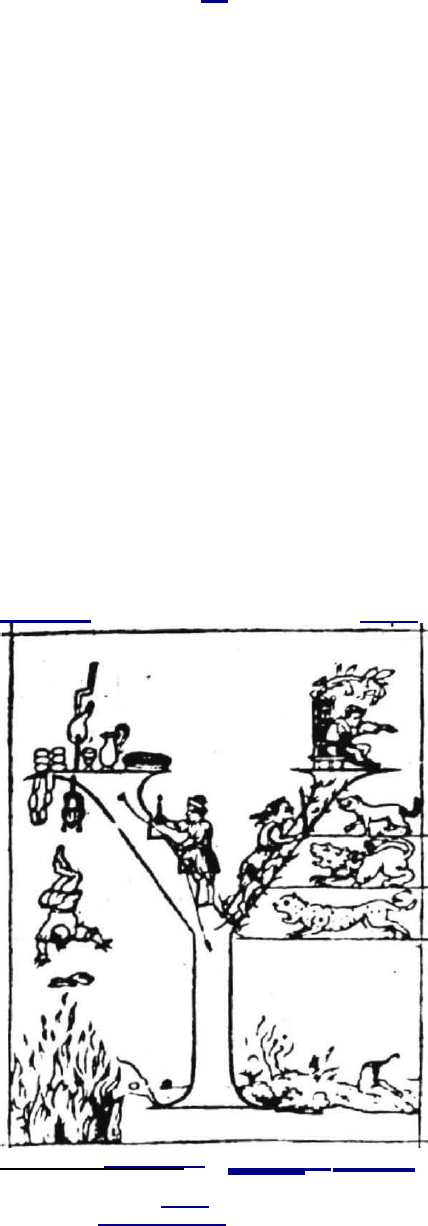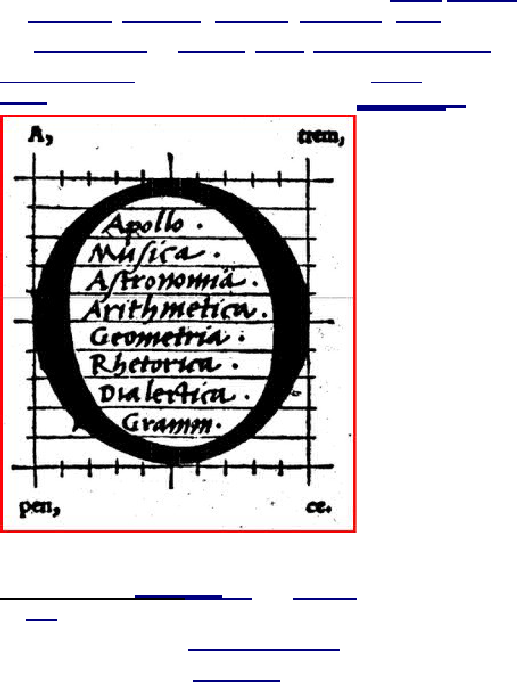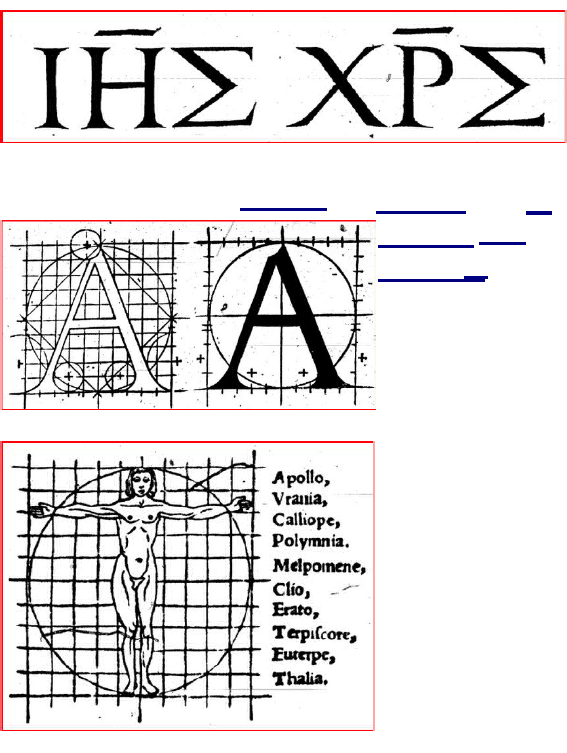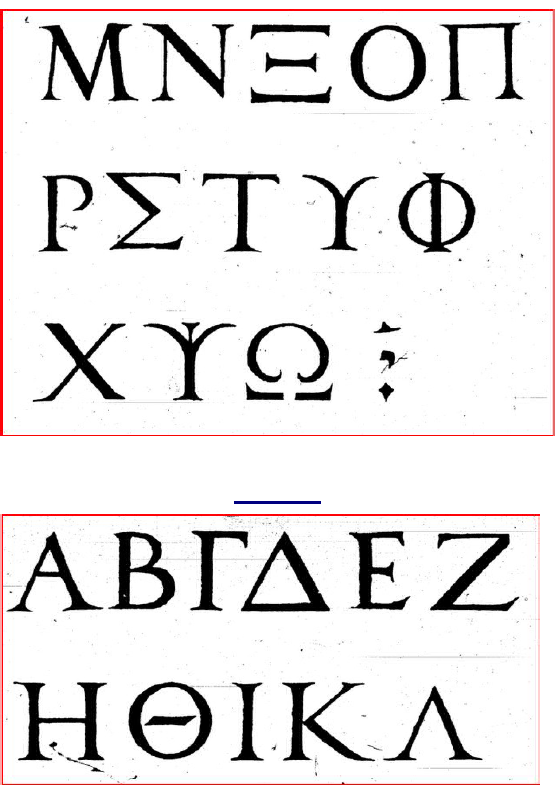Encryption and Decryption of the Alphabetical Hieroglyphs
|Reads: 184|Likes: 0
Published by jwr47
The oldest A-I-U vowel concepts seem to have retained their original vowel structures in all languages. Existing A-E-I-O-U vowel concepts seem to have retained their original vowel structures up to their first modifications in which vowels had been modified...
The oldest A-I-U vowel concepts seem to have retained their original vowel structures in all languages. Existing A-E-I-O-U vowel concepts seem to have retained their original vowel structures up to their first modifications in which vowels had been modified.
Greek language lost its symmetrical vowel structure at the introduction of the long vowels H and Ω (6th century BC). Latin language lost its symmetrical vowel structure at the introduction of the specific Greek letters Y and Z (146 BC).
In the Greek alphabet the first letter A and the last letter Upsilon (U) initially had been defined as vowels. In the 6th century BC the Greek alphabet had been modified to use a first letter (A) and the last letter (Ω) as vowels. Latin obviously always used a consonant (X or Z) as a last letter.
The vowel concept for the Latin alphabet may be considered as intact if the Y-vowel is ignored.
Greek language lost its symmetrical vowel structure at the introduction of the long vowels H and Ω (6th century BC). Latin language lost its symmetrical vowel structure at the introduction of the specific Greek letters Y and Z (146 BC).
In the Greek alphabet the first letter A and the last letter Upsilon (U) initially had been defined as vowels. In the 6th century BC the Greek alphabet had been modified to use a first letter (A) and the last letter (Ω) as vowels. Latin obviously always used a consonant (X or Z) as a last letter.
The vowel concept for the Latin alphabet may be considered as intact if the Y-vowel is ignored.
More info:
Availability:
scribd. scribd. scribd. scribd. scribd. scribd. scribd. scribd. scribd. scribd. scribd. scribd.
A hierarchical order
It surprised me to see seven “vowels” to the vowel branch. Even more the category of semivowelsmay be considered as most interesting. From a philosophical standpoint the semivowels might be playing a role in the hieroglyphic hierarchy, in which the vowels AEIOU belong to the highest level(maybe with a vowel “I” at the top ?):
•
5 Roman vowels AEIOV and the additional Greek vowel Y and the aspiration H
•
7 semivowels LMNRSXZ
•
9 mute letters BCDFGKPQTThe vowels I-A-V seemed to be a standard for all alphabets, but what role had been taken by the Y.The Upsilon seemed to be a joker in the contest, switching between I and U ad lib.At least the Latin had been highlighting the I as a long vowel. At the left and right side the A and Vhad been located as ministers. The é and ó seemed to be servants compared the main IAU triad.
Á
É
ꟾ
Ó
v "
This perfect symmetry has also been identified in the Hebrew vowels:
â
,
ê
,
î
,
ô
,
û
The same procedure could be followed for the Greek set of vowels, in which the long vowels H andΩ must be promoted over the short vowels E and O. Unfortunately the Ω and the Y do not respectthe
A-Y
symmetry in the Greek alphabet, which would match the
V "
symmetry at the left andright side of the Latin alphabet.
A
,
E
,
H
,
I
,
O
,
Y,
Ω
Vowel Symbolism
I remembered the letter Y had been used by Wycliffe in the translation of the Bible (e.g. Genesis) as
an ego-pronoun and considered the special vowel at the time of Wycliffe's translation (1330-1384)might have been placed at the hierarchical top.“And the Lord seide to Cayn, Where is Abel thi brother? Which answerde,
Y
woot not;whether
Y
am the kepere of my brothir?”I comparedGeoffroy Tory's structure with the Hebrew alphabet with the three Mother or Primary
letters (
Æ
(Aleph), M, Sh), the seven Double letters (T, R, Ph, Ch, D, G, B) and the twelve Simpleor Elemental letters (K, Ts, Gh, S, N, L,
I
, T, H, Z,
,
E
)
.The seven Double
letters correspond to the seven days of the week. The twelve remainingletters are categorized as Simple or Elemental and correspond to the twelve Hebrew monthsof the year.In relation to the dimension of time, the three "Mother" letters correspond to the seasons of the year. The summer is represented by the letter
(the letter of fire), the winter by
(the letter of water), and the two intermediate seasons are represented by
(the letter of air).In Hebrew the vowels seemed to be missing, but I knew the
Æ (Aleph), I (yod)
,
E (He)
,
(au)
had been playing a role in the vowel symbolism. And somehow the Latin vowels
A-E-I-O-
graphically looked like the Hebrew set of 4 consonants
Æ-I-E-
, which allowed the language touse the same set of Latin's long vocals
â, ê, î, ô, û.
Comparing Arabic language, which seemed to be based on 3 vowels
A-I-U
(ruled by the Aleph),Hebrew language with its 5 long vocals
â, ê, î, ô, û
, and Latin with
A-E-I-O-
, as well as Greek with 7 vowels
A
,
E
,
H, I, O, Y, Ω
seemed to have been in a philosophical contest.In this contest only the
long
vowels had been considered as important. Some languages did not evendocument their short vowels in scripture. I learned to identify the
A-I-U
(in Greek I-A-Y)combination as
a high ranked subset, in which each letter seemed to have won one of the games.The letter
I
(Yod) seemed to have played a major role in the archaic Latin culture, in which theGreek dominance had been absent.Geoffroy Toryhowever taught me the impact of the additionalGreek letters
Y
and
H
, which completed the medieval French alphabet to seven “vowels”. Sevenhad been considered the sacred number and for good reasons the seventh letter
Y
had been namedthe Pythagorean letter, completing the alphabet to cope with the Greek alphabet
A
,
E
,
H, I, O, Y, Ω
.Still these 7-fold structures did not meet the criteria for ideal structures. The Greek alphabet for instance also included short vowels
E
and
O
, which had been excluded from scripture in other languages.Another seemed to be the strange character of the letter Y, which seemed to have been varied between the I- and U-vocals, including the intermediate
I decided to document some of the “rules” I had studied, which of course is an intermediate phase ina proceeding process, which probably needs a dozen lifetimes to be completed...
7The
Letters of the Day as taught in Sefer Yetzira8double because they each represent two sounds, hard and soft










Early philosophy generally had been based on vowel symbolism to design the divine names,eventually to be paralleled by other basic concepts for the ego-pronouns and followed by the designfor the days of the weeks
.The rules to design words and names had been based on a universal set of rules, which is needed todecipher the fundamental alphabetical hieroglyphs.The following set of rules in the appendix I is a subset, to be expanded and updated for futurecorrections.

Appendix I – Vowel Symbolism
Archaic Vowels
1.The Jewish alphabet had been designed to generate 5 long vocals â, ê, î, ô, û from 4consonants (
,
): the letters Aleph and the three letters of theTetragrammaton
. The letter
had been considered as a consonant.2.The
merely allowed to generate long
vocals and therefore only the
long
vowels may be considered as hieroglyphs.3.A Greek fragment of Leviticus (26:2-16) discovered in the Dead Sea scrolls (Qumran) has
ιαω
("Iao"), the Greek form of the Hebrew trigrammaton
YHW
4.The threeFates created the first five vowels of the Greek alphabet and the letters B and T. It
is said thatPalamedesinvented the remaining eleven consonants. Other consonants havesince been added to the Greek alphabet
.5.Originally the Greek alphabet started with five vowel symbols by altering the Phoenicianconsonants
to a vowel /a/;
yod to
. 6.As in Phoenician, the difference in length was not originally made in writing. [u] and [i]already had been designed aslong vowelsin the Phoenician alphabet. Long [eː] and [oː] had been written with thedigraphs
ει
and
ου,
respectively, whereas long and short [a], [i], [u]never were distinguished in writing. Initially the letter
ḥēth
was retained in Greek as aconsonant,eta,representing the [h] sound in those dialects which had an [h]
hē
had been used as a
mater lectionis
for both [a] and [e] in addition to [h], but in Greek it was restricted to [e].7.For their historical record of long and short character
[a], [i], [u]
may be considered as thearchaic, fundamental triad of vocals in an alphabetical phase in which long [eː] and [oː] had been represented by their digraphs
ει
and
ου
.8.According to a thesis in the
Runes-Dictionary
by Udo Waldemar
Dieterich
(1844) thearchaic runes had been equipped with only three runes for vowels:
A, I, U
)
12Bezalel Porten,
Archives from Elephantine: The life of an ancient Jewish military colony
, 1968, University of California Press, pp. 105, 106.13Tetragrammaton14Hyginus'(c. 64 BC – AD 17) legend about the introduction of Phoenician letters to Greece (quoted inHistory of the
Greek alphabet
)15aglottal stop in Phoenician
16because the pharyngealityaltered the following vowel17Phoenician alphabet18History of the Greek alphabet19Vowel(Vowel Systems)




















From the 6th century BC
1.By the 6th century BC the letter eta
. The Alphabet now used 7 vowels:
A
,
E
, H,
I
,
O
,
Y
, Ω,in which
A, E, I, O, Y
were short and
A, H, I, Ω, Y
were the long vowels.2.Latin started with 5 vowels A, E, I, O, V. The primarydiacriticwas theapexused to mark
long vowels, which had previously been written double. However, in place of taking anapex, the letter i was written as along I-vowel
:
Á
É
ꟾ
Ó
v "
3.Essentially the five long fundamental vocals
â, ê, î, ô, û
had been available in Hebrew (inthe letters Aleph and the three letters of the Tetragrammaton), in Greek initially in
A, E, I,O, Y
(and later more specifically in
A, H, I, Y, Ω
) and in Latin in
V "
, in which theLong i
-owel
had been written as if the vowel had been set in a special archaic form of an
Upper Case
.4.In all variants of these three languages the
I
had been located at a central (highlighted) position of the long vowels
:- in Hebrew in the five long fundamental vocals
â, ê,
î, ô, û
- in Greek in
A
,
E
, H,
I
,
O
,
Y
, Ω, with the archaic undifferentiated
A, E, I, O, Y
and later thesubset of long vowels
A, H, I, Y, Ω.-
in Latin in:
Á É
ꟾ
V "
5.The 5 vocals (basically â, ê, î, ô, û) have been the keywords in designing the divine names(such as the
I
AΩ
,
ꟾ
Ó ŠÉ
I
OU-piter, D
i
eu, D
i
aus
,ieu
,iou
etc.) and for the days of the week (such as jueves, jeudi, Jovedi,dijous...) in a great variety of languages.
6.Most of the vowel cores inside the divine names (and ego-pronouns) start with an
î
, to befollowed by one of the vowels
â, ê, ô,
and a eventually a trailer vowel
û
. From these positions we may derive the principality of the vocal/letter “
î
” or
I
(in Latin
ꟾ
).7.Archaic divine names will often be restricted to three-vowel words such as D
yau
s,
IAΩ
,
IOU
-piter, D
ieu
. Therefore the triad-design seems to be the archaic prototype.8.In Latin the principal deity had been chosen
ꟾ
Ó ŠÉ
ôû
ꟾ
-piter. In Hebrew the divine name
YHWH
had been represented by various vowel combinations such as
îâûê
,
îêûê
, andtheoretically also
îôûê.
20not needed for a consonant in eastern dialects of Greek, which lacked [h]21History of the Greek alphabetandLong i (with a sample
LV
Š
CI
·
ꟾ
A
·
FILI
ꟾ
, which in modern rendition would be
lūciī a filiī
23This might have been the main reason for English language to capitalize the ego-pronoun I24Tacituscommented: Besides this he [Claudius] invented three new letters and added them to the alphabet,maintaining that they were greatly needed; he published a book on their theory when he was still in private life ...25A-Ω: Greek Vowels and the Chaldean Planets26
27The ego-pronoun for the Jauer -dialect
28Sursilvan29Sutsilvan30Rumantsch - Grischun31Permutations of the Trigrammaton YHW




















9.TheMatres Lectionisallowed four Hebrew consonantsAleph,He, Waw, Yodhto represent 5
vocals (ê, ệ, ậ, â, ô - ê, ệ, ậ, â, ô - ô, û – respectively î, ê, ệ). The letter Hehowever mostlyrepresented ā or ē (excluding the ō), which automatically reduced the possibility of generating “
Joe
” (respectively
ꟾ
Ó ŠÉfrequent generation of “
Jae
” or “
Jee
”).10.Basically
ꟾ
Ó ŠÉhieroglyphs (representing the vocals â, ê, î, ô, û) according to
similar
or common methods.
From 146 BC
1.Towards the end of the Roman Republic, after the conquest of Greece (146 BC) the Greek letters
ypsilon
and
zeta
were added to the end of the Latin alphabet, in the form of
y
and
z
,so that the Romans could properly spell Greek words and names
.2.The usage of Yin Latin dates back to the first century BC. It was used to transcribe
loanwords from Greek, so it was not a native sound of Latin and was usually pronounced /u/or /i/. The latter pronunciation was the most common in the Classical period and was used by most people except the educated ones. TheRoman Emperor Claudiusproposed
introducing anew letter into theLatin alphabet to transcribe the so-called
sonus medius
(ashort vowel before labial consonants), but in inscriptions, the new letter was sometimes usedfor Greek upsilon instead
⟨ ⟩
upsilonnot being in use yet, but this was changed to "i Graeca" (Greek i) as Latin speakershad difficulty distinguishing its foreign sound /y/ from /i/.4.TheClaudian letterswere developed by theRoman Emperor Claudius(reigned 41–54). He
introduced three new letters:- , (
Ⅎ
digamma inversum
- (
Ↄ
antisigma
) to replace BS and PS- Ⱶ (
or H-Dimidia), a vowel sound between /i/ and /u/ (example:
optumus
/
optimus, maximus / maxumus
).
32The Lapis Niger - Codex 9933Upsilon34In Latin, there was no distinction between the vowel U and the consonant V (pronounced W); both were representedwith a V.































.gif)